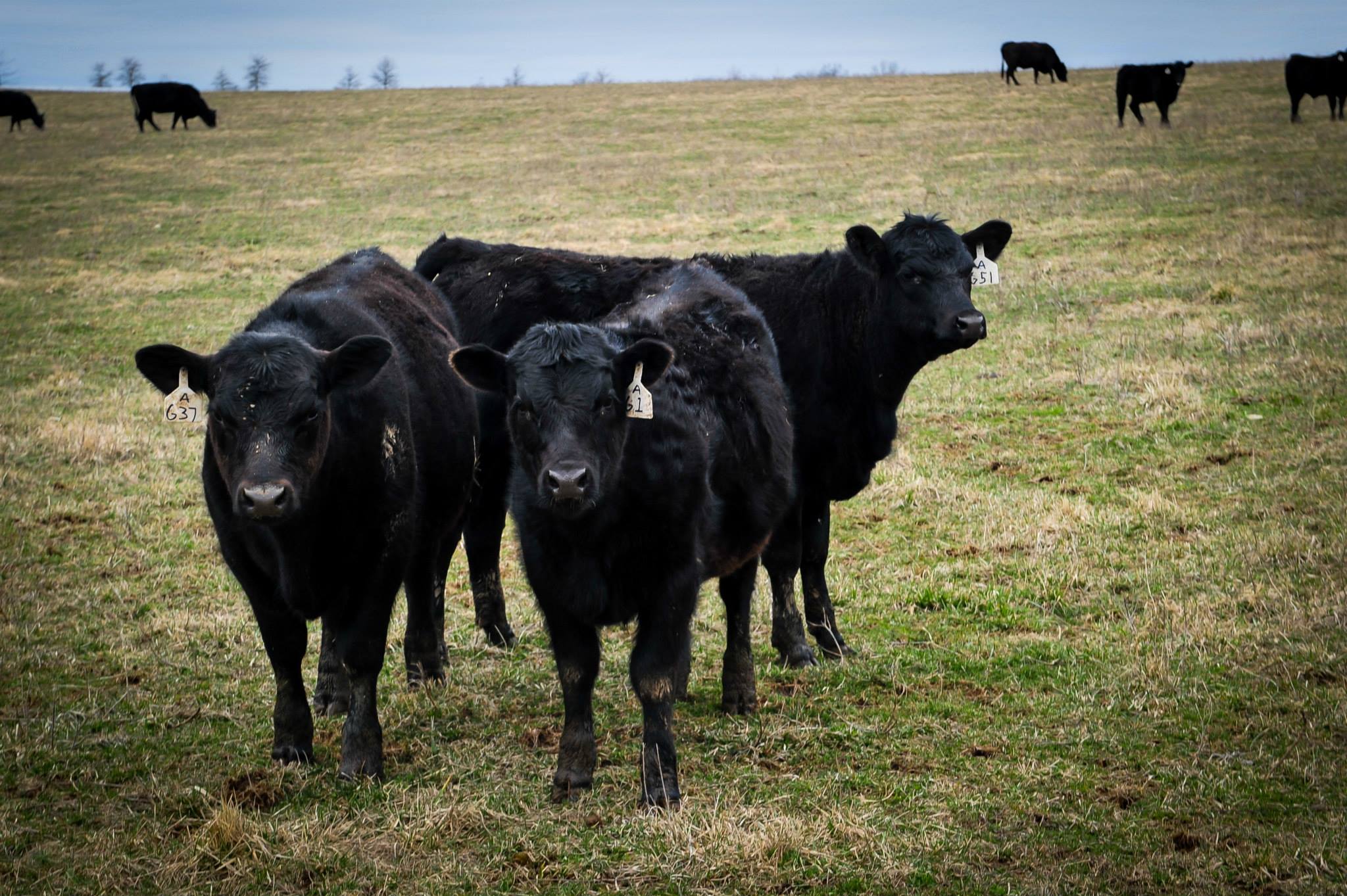Winter took a toll on cattle health
Winter took a toll on cattle health


Producers should consider supplemental feed to help cattle through the next month to six weeks until grass is growing and is past the “watery” stage. Energy and protein are both crucial.
Most winters take a toll on cattle, but this winter has been tougher than most. Temperatures have been colder, leading to extended periods of livestock cold stress. Ice and snow cover was relentless and more than most Kentucky beef producers have seen in the past 15 to 20 years.
All cattle are susceptible to these adverse conditions especially if they are older or they are not getting the proper nutrients.
“These cows are frequently in poor body condition with no body fat stores, and have a rumen full of forage material (hay) and may be described as ‘bloated’ by the producer,” said Michelle Arnold, University of Kentucky College of Agriculture, Food and Environment extension veterinarian. “Despite having had access to free choice hay, these cows have just ‘run out of gas’ with green grass just around the corner – with a belly full of hay. However, this winter, we have been encountering these ‘malnutrition’ cases on a much more frequent basis, at a much earlier date, and are seeing what should be sound young cows and pre-weaning/weaning age calves also affected.”
Despite producers diligently trying to feed and protect the animals, the cold just won out in many cases. Many university studies show that the lower critical temperature for cows with dry, heavy winter coats is 18 degrees Fahrenheit.
“It may be surprising to some, but that lower critical temperature when a cow is wet is actually around 59 degrees,” said Louis Pittman, veterinary pathologist at the Breathitt Veterinary Center at Murray State University, which works closely with UK on veterinary pathology issues. “For every degree that the temperature drops below the critical temperature, a cow has to expend 2 percent more calories to maintain body heat and condition.”
Wind chills have been especially low this past winter and that causes cattle to expend even more energy to stay warm.
“So the cattle just aren’t getting adequate supplemental energy and protein sources,” Arnold said. “If you don’t know the nutritional quality of your hay, you won’t know if you are providing sufficient nutrition to meet the animals’ needs. That can result in depletion of body fat stores, breakdown of muscle protein and even death, due to insufficient nutrition.”
Granted, the spring and summer of 2013 presented good growing conditions for forages, and Kentucky had greater hay production than in previous years. But that’s no guarantee.
“Even with good quantities of forages, the cases we’ve seen this winter where cows were fed only hay suggests that the hay didn’t have the best nutritional quality,” Pittman said. “The hay may look good, but without testing, we just don’t know the true feed value. The take home message here is to get your hay tested so you’ll know what you’re feeding.”
Arnold said it is important to understand that this winter has been exceptionally difficult for cattle in Kentucky and cows were pulled down much more than the typical winter.
“This fact, coupled with the knowledge that the quality was generally poor for hay baled in 2013, is the reason we are seeing an increase in malnutrition in all ages of cattle as well as many stillborn and weak calves that do not survive. What has normally worked in years past (feeding cattle hay exclusively throughout the winter) did not necessarily work this year.”
“Protein tubs will not be sufficient in most cases to fulfill energy requirements,” Arnold said. “Producers should contact a veterinarian and/or a nutritionist to review their feeding program because adequate nutrition is not just important today but also down the road.”
“Continued milk production, the return to estrus and rebreeding and overall herd immunity will also be impacted over the long term,” Arnold said. “Producers should continue to offer a trace mineral mix high in magnesium to prevent hypomagnesemia or ‘grass tetany’ at least through the first of May.”
Weather


